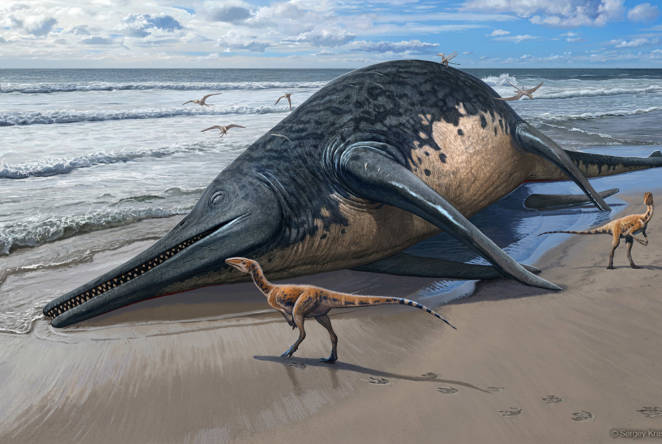Dr Dean Lomax
Research Fellow 2023
Novel Imaging Elucidates Hunting Behaviours of Giant ‘Sea Dragons’
University of Bristol
Earth Sciences
A little over 200 years ago, the first ichthyosaur brought to the attention of science was discovered by pioneering palaeontologist Mary Anning. This discovery formed the first scientific account of an ichthyosaur and fuelled a scientific revolution. With their reptilian skull and dolphin-like external form, the Mesozoic ichthyosaurs are icons of evolution. Their discovery was more than 20 years before even the word ‘dinosaur’ was invented and long before the theory of evolution.
Fast forward to 2021 and to a chance find made in landlocked Rutland, East Midlands, of all places. This new find, measuring 10 metres long from head to tail, represented a remarkable, practically complete ichthyosaur skeleton unlike anything ever found in the UK before. One of the greatest finds in British palaeontological history, this fossil became known as the ‘Rutland Sea Dragon’ and took the world by storm when it was announced to the public on January 10, 2022. In conjunction with this major find, another extraordinary discovery was made recently in Germany, and which will provide new details about the behaviour of these prehistoric reptiles.
Using cutting-edge accelerator science to investigate these exceptional new discoveries, these experiments have the capacity to revolutionise our view of species palaeobiology, providing novel ways to understand the anatomy and behaviours of extinct apex predators. As the new fossils represent significant examples of Early Jurassic marine reptiles, it provides opportunities to understand how ichthyosaurs quickly managed to reach giant (10+ metre) size following a major extinction event at the end of the Triassic Period. Research on these newly collected specimens combined with a fresh look at significant historically collected ‘sea dragons’, this project will help to better understand the diversity of Early Jurassic ichthyosaurs. Building on the incredible 200-year-long story of ichthyosaurs, this fellowship will offer a unique, pioneering gateway into studying exceptional fossils and provide new opportunities for high-impact research and engagement.

